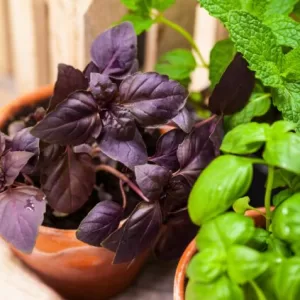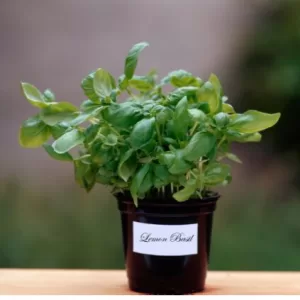Basil: The Aromatic Essence of Global Cuisine
Discover the Varieties and Nutritional Virtues of the Plant that is the Soul of Mediterranean Cuisine
Basil is not just an herb – it’s a culinary institution.
With its fragrant leaves and unparalleled versatility, it plays a leading role in kitchens around the world. This article invites you on an aromatic journey exploring the origins, varieties, and nutritional value of this plant that is more than just a seasoning; it’s a celebration of flavor and health.
Origins and History
Originating from India and the tropical regions of Asia over 5,000 years ago, basil has played a significant role in both cuisine and traditional medicine. Revered in many cultures, it is also a plant with significant symbolic meaning, associated with hospitality in India and love in Italy.
Varieties and Culinary Characteristics

Genovese Basil: Perhaps the most famous variety, it is the backbone of Genovese pesto. Its large green leaves and slightly sweet flavor with a hint of anise are perfect in fresh dishes like Caprese salads.
Thai Basil: With a taste reminiscent of licorice and lemon notes, it is essential in many Thai, Vietnamese, and Laotian dishes. Its smaller, pointed leaves and purple stems add color and a spicy touch to dishes.
Holy Basil (Tulsi): Known for its medicinal properties in Ayurveda, it has a spicy flavor and is used in both teas and traditional Indian dishes.
Lemon Basil: With its distinctive citrus aroma, it is ideal for infusions, teas, and adding a vibrant note to desserts and cocktails.

Purple Basil: Visually striking with its dark leaves, it has a milder flavor and is excellent for adding a contrast of color and mild flavor to salads and decorative dishes.
Nutritional Value
Basil is more than a flavor enhancer. It’s rich in vitamin K, essential for bone health and blood clotting. Additionally, it contains a good amount of antioxidants, including flavonoids and essential oils, which can promote cardiovascular health and combat inflammation. Each variety brings its own composition of essential oils, which can influence its specific health benefits.
Culinary Uses and Preparation Tips
Basil is most flavorful when fresh and should be added at the end of cooking to preserve its aroma and flavor. It pairs perfectly with tomatoes, olive oil, garlic, cheeses, and lean meats. For an innovative use, basil leaves can be incorporated into ice creams and other desserts, offering an intriguing contrast of flavors.
Conclusion
Basil transcends its role as an aromatic herb to become an essential cultural and nutritional element. From its rich history to its diverse varieties and uses in modern cuisine, basil is a living testament to the multifaceted nature of the ingredients we choose to enrich our food. By incorporating different types of basil into our cooking, we open up a world of culinary possibilities and take a step toward a healthier and more aromatic lifestyle.